Mold on clothes can not only look unsightly, but it can also weaken the fabric and cause unpleasant odors. It’s essential to address this issue as soon as possible to maintain the integrity and appearance of your garments.
In this article, I will show you how to get mold out of clothes, and how to keep your clothes looking clean and fresh.
By identifying mold stains on clothes early, you can address the problem before it causes extensive damage.
Today, I will share the essential cleaning supplies you need for mold removal and outline a step-by-step process to eliminate the pesky fungus from your apparel.
I am also going to share my best tips for keeping mold out of clothes and how to keep mold out of your home, specifically your closet!
How to Get Mold Out Of Clothes:
- Remove the top layer of mold from clothes using an old toothbrush – this can be done outside.
- If you have wet clothing, let it dry in the sunlight before you attach the stains.
- Pre soak your moldy clothes in a mixture of equal parts water and vinegar for at least an hour before you wash them.
- Adding a half a cup of baking soda to your wash cycle, helps to remove the mold smell from your clothes.
- After the clothes have been washed, put them out in the sun to air dry – this is the preferred drying method. If you cannot do this, dry them thoroughly in your dryer.
- Check all stained clothing carefully, and repeat the process if need be.
*This post contains affiliate links. Full disclosure here.
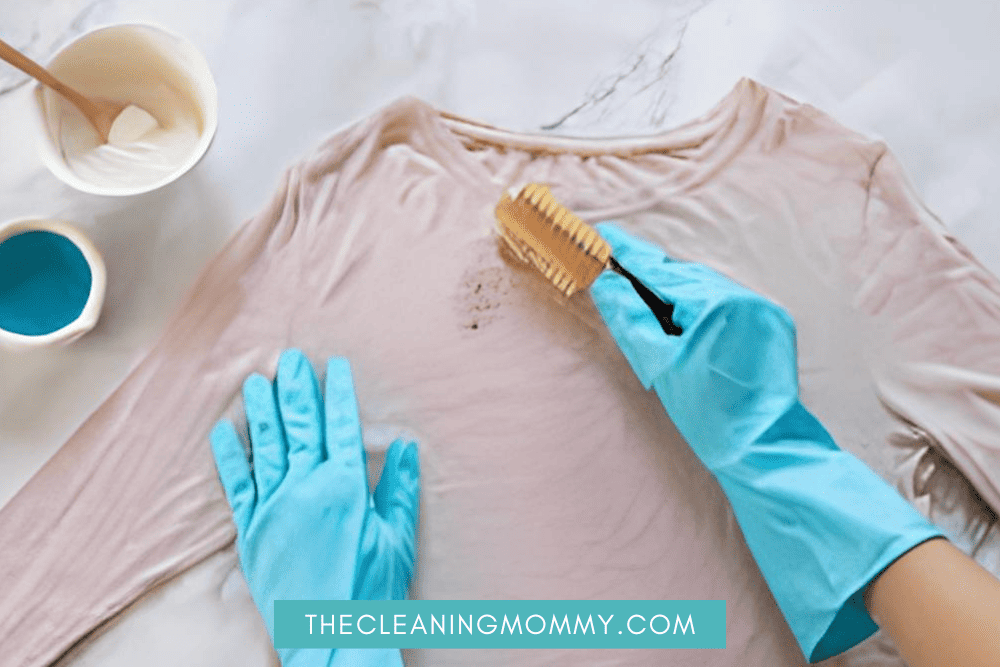
Table of Contents
- How to Get Mold Out Of Clothes:
- How to Get Mold Out of Clothes Step-by-Step
- Best Washing Methods for How to Get Mold Out of Clothes
- After You Wash Clothes, Do This:
- Identifying Mold on Clothes
- Items Needed To Remove Mold Stains
- What Are the Causes of Mold in Clothes
- Preventing Future Mold Growth
- When to Seek Professional Help
- Other Cleaning Articles You May Like:
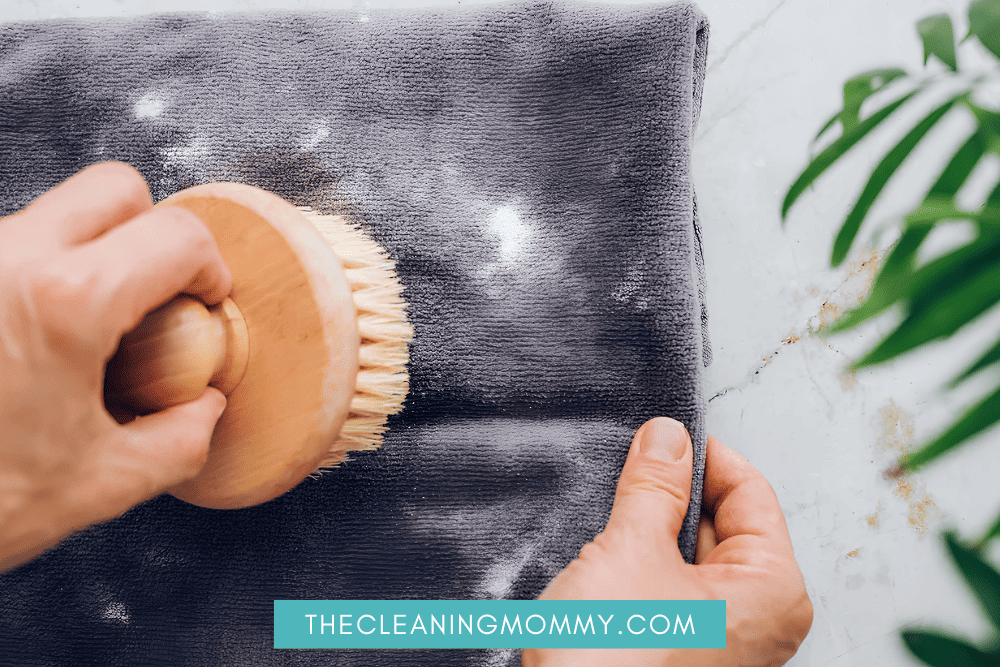
How to Get Mold Out of Clothes Step-by-Step
When you discover moldy clothing, your first instinct is to burn all affected clothing and go out and buy a whole new wardrobe!
I get it, I really do.
Lol, but before you do that, stick with me and I’ll share my best tips for how to get mold out of clothes.
You may want to use gloves and a mask so as not to touch the mold infected areas with your hands, or smell them.
Before you start to remove mold from your stained clothes, check your clothes in a well-ventilated room to identify the extent of the mold stain and how bad the affected area is. This includes checking any other clothes that are near the already infected clothes, as they might also be affected.
- Remove Visible Mold: An old toothbrush works really well to remove the mold. Gently scrub the mold from your clothing, this will help remove the top layer of mold and prepare the garment for further treatment.
- Sun dry if wet: If you have wet clothes, let them sit in the sun until they are completely dry. Sunlight helps tremendously to kill mold spores.
Best Washing Methods for How to Get Mold Out of Clothes
Now that your clothes are prepared, try the following methods to get rid of the mold stains:
- White distilled vinegar: The acetic acid in vinegar kills mold spores. To find the perfect level of acidity for your affected clothing, try using a solution that contains 4.0% – 4.2% acetic acid or even higher. Pre soak your moldy clothes in a mixture of equal parts water and vinegar for at least an hour before they go in the laundry machine. You can also spray undiluted white vinegar directly onto the moldy stains before you add it to the hot water cycle. Always remember to check the suggested water temperature before you wash any garment.
- Baking Soda: Baking soda has so many uses in your home, that’s why I always have it and never run out. Baking soda is a natural cleaner and mold smell-fighting agent. It also acts as an acid neutralizer, helping to remove mold from the fabric. For an extra cleaning boost, add half a cup of baking soda to your wash cycle. Adding this to your laundry load will help remove the mold smell from your clothes. Say goodbye to mold and hello to fresh, clean clothes!
After washing the clothes with either of the above methods, follow these steps for best results:
After You Wash Clothes, Do This:
After your moldy clothing have been through the wash cycle, follow these steps
- Sun Dry: Hang your clothes out to dry in the direct sunlight. The UV rays will give your clothes a freshness boost and further help to kill any remaining mold spores.
- Inspect and repeat if necessary: Check your clothes for any remaining mold stains or smells. If mold is still present, repeat the washing process. Always make sure to be gentle when you are scrubbing your clothes, as excessive force can damage the fabric.
By following these steps, you can effectively remove mold from clothes and make them fresh and clean again.
Happy washing!
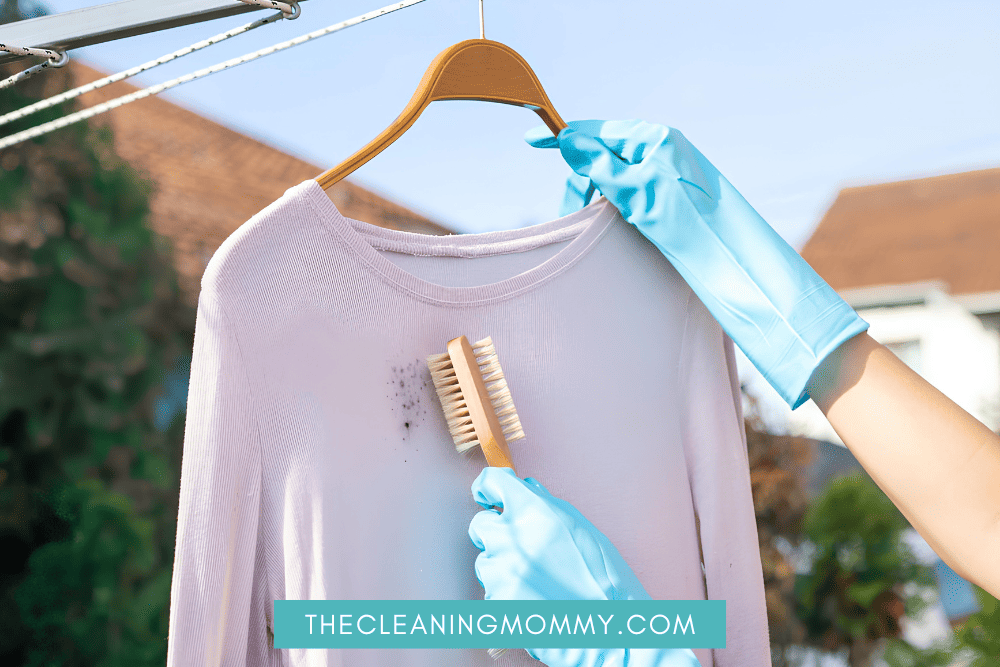
Identifying Mold on Clothes
Discovering mold on your clothes is vital for keeping your wardrobe clean and healthy. Though not always immediately apparent, mold gives out a distinct musty scent that serves as a telltale sign. Begin by inspecting your clothing for visible indicators like dark, green, or white spots. The presence of these marks likely means you have moldy clothing in your closet.
Noticing the smell is another key indicator of mold presence. Moldy clothes can give off a strong, musty scent even before the mold is visible. If your clothes smell musty, it’s worth taking the time to inspect them thoroughly for any signs of mold growth.
Don’t let mold ruin your wardrobe!
Basements and bathrooms can create the perfect conditions for mold growth, and putting your clothing at risk.
Do not store your clothes in a damp place.
Keep a close eye on your stored items in these spaces to detect any signs of mold development. Staying one step ahead will really help to keep your clothes mold-free.
Additionally, before putting your clothes away, ensure they are completely dry as wet clothing can attract mold.
Remember that mold can also grow inside the pockets, folds, or along the seams of your clothes. Don’t overlook these areas when checking for mold – you might find some hiding in unexpected places.
Identifying moldy clothes involves inspecting your clothes for visible signs like spots or patches, noticing musty odors, checking for clothes stored in damp environments, and examining the seams and folds thoroughly for mold stains.
By keeping a close eye on your wardrobe, you’ll be better equipped to tackle moldy clothing before it becomes a bigger problem.
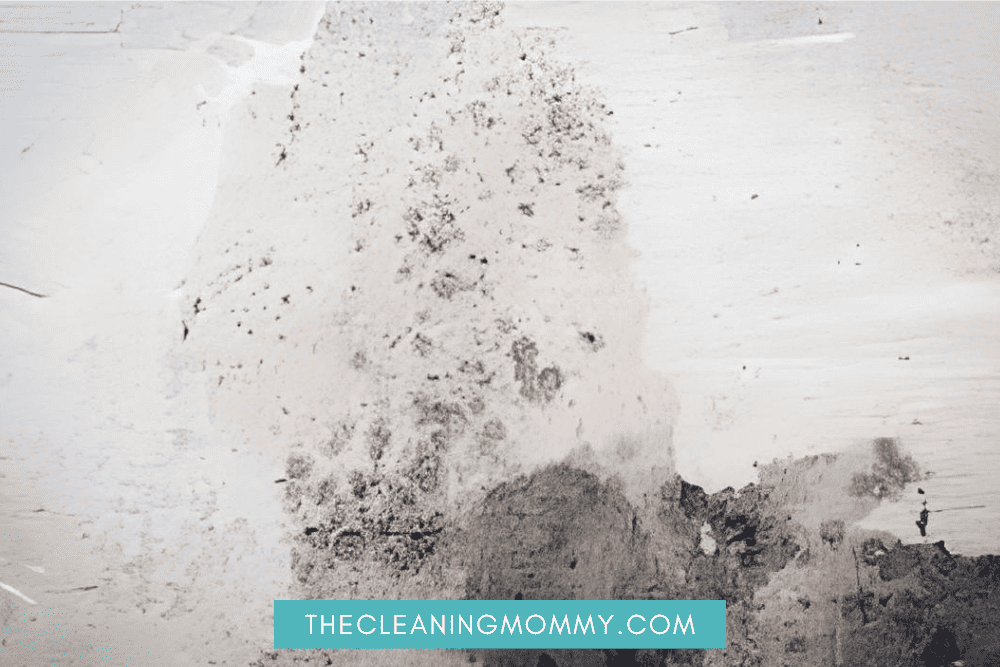
Items Needed To Remove Mold Stains
You may be a little overwhelmed when it comes to claning stuboorn mold stains, but I am here to tell you that removing mold stains actually isn’t that big of a deal when you have the right supplies!
Here is what you need to remove mold from clothes!
First, you’ll need a bucket or container large enough to soak the moldy clothes. This will be used to mix hot water with the mold-removing solutions, such as Borax, white vinegar, or oxygen bleach like OxiClean.
Pick a container that can comfortably fit your moldy clothing, giving them enough space to be fully submerged in the solution.
Next, ensure you have an effective mold stain remover. As mentioned, options for this include Borax, undiluted white vinegar, or oxygen bleach. Whichever you choose, make sure to follow the recommended measurements for the best results for your stained garment.
For example, you can mix half a cup of Borax or one cup of white vinegar with water in the bucket. If you decide to use a chlorine bleach product, follow the instructions indicated on the packaging.
Don’t forget to grab a scrub brush suitable for your clothing material. You’ll use this brush to remove visible traces of mold from the fabric after it has been soaking in the mold-killing solution. A scrub brush works really well at cleaning stubborn mold stains.
Ensure you have a mold-killing detergent ready to assist in completely removing mold and its spores from your clothes. Choose a suitable laundry detergent for your clothing’s material and color, as there are many options available on the market. OxiClean is my favorite laundry detergent for this job, because it works really well
Hot water is essential to effectively kill mold spores during the washing process. Always use hot water instead of cold water in the washing machine, the hot water will have a much better results.
Once you have all of these cleaning supplies, you will have everything you need to remove mold from your clothes and get your clothes looking clean once again!.
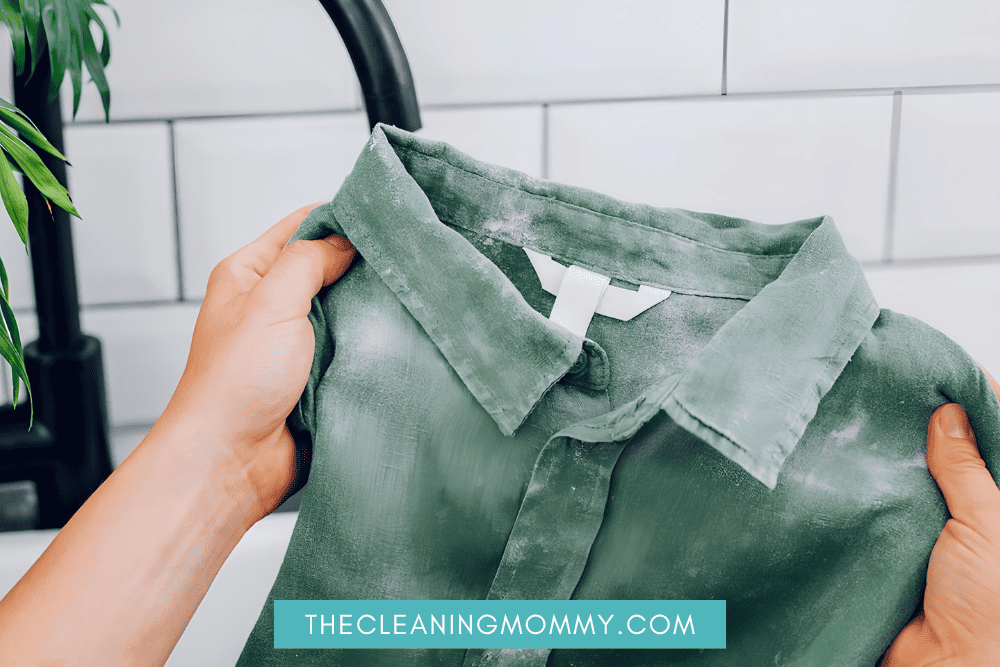
What Are the Causes of Mold in Clothes
I know it probably freaked you out when you found clothing items that have mold on them. Mold growth on your clothes can send you into a tailspin, I’m going to share how to prevent mold growth and mold in your home period!
I believe you will prevent mold in your clothes when you understand how mold gets into your home and clothes. Check out these key factors that contribute to mold growth.
Humidity
High humidity levels create the perfect environment for mold growth. So, you never want to store your clothes in an area that is damp, nor do you want to leave damp clothes sitting in a washing machine to be moved to a dryer, or sitting in a washing machine to be washed. Think wet clothes and wet towels when you come in from the pool.
Do not leave wet clothes sitting in your washing machine waiting to be washed. Stick a load on straight away, and set a timer or alarm for when it finishes, so you can move them into the dryer straight away.
Doing this will help tremendously to prevent mold growth!
Always make sure your clothes are dried thoroughly before putting them away, and once again, do not store them in a humid environment.
Poor ventilation
Mold thrives in places with little to no airflow. Putting your clothes too tightly together in your closet or drawers can limit air circulation, making it easier for mold to form. So, you want to make sure you have some room in your closet or drawers so there is sufficient airflow around your clothes, so that moisture can evaporate properly.
PRO TIP: Move seasonal clothes to vacuum packed storage bags and put them under your bed or high up in your closet.
Spills and stains
If you accidentally spill food or liquid on your clothes, make sure you clean them as soon as possible. Organic material in food stains can turn into a cozy breeding ground for mold, but a quick wash can prevent moldy garments.
Old or damp clothing
Clothes that haven’t been worn for a long time or have been stored while damp can become a breeding ground for mold spores. To avoid mold, make sure to check and clean stored clothes regularly and let them breathe, especially if they’ve been in storage for an extended period. The moldy smell is a huge giveaway. If you are getting musty smells, look into it ASAP.
If you do everything I mentioned above with your clothes, you can significantly reduce the risk of mold development.
Always remember to keep your clothing as dry as possible, maintain proper ventilation, address spills and stains immediately, and frequently check on stored clothing items to keep mold growth at bay.
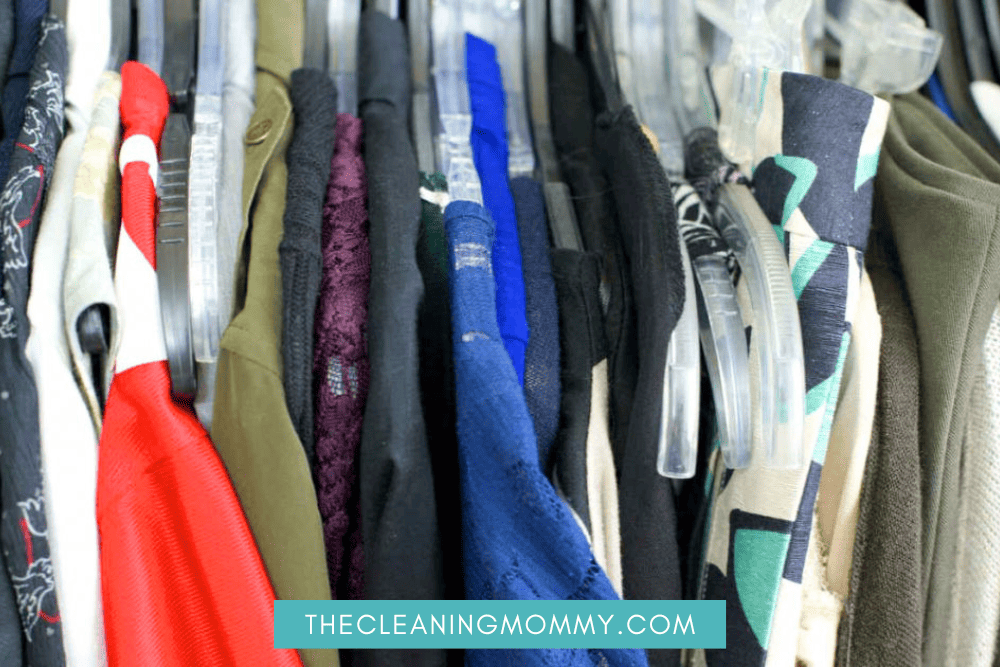
Preventing Future Mold Growth
Taking care of your clothes and controlling your home environment can help you prevent future mold growth. In this section, I am going to dig a little deeper into how you need to store your clothes to ensure your clothes don’t become a breeding ground for mold.
Proper Storage
Properly storing your clothes is key to preventing mold growth. A great way to keep your clothes mold-free is to ensure they are fully dry before storing them. Take advantage of the sun’s drying power whenever possible. If that’s not an option, rely on a dryer for maximum dryness.
When storing clothes, don’t overcrowd your closet. I think we’re all a little guilty of this. If possible, declutter your closet, or move your seasonal clothes into vacuum packed storage bags and store them elsewhere. Instead, try to create space between your garments to allow air to circulate. Using breathable garment bags or storage containers can also be helpful in keeping your clothes mold-free.
I have found signs of mold present in the kids laundry basket previously, kids tend to leave wet laundry in their hamper frequently. If this happens to you, do this!
Remove all clothes and spray the cloth laundry basket with equal parts white vinegar and warm or hot water. Let the solution soak in the laundry hamper for at least 5 minutes. Then wash it out with either household soap or detergent. If you have a laundry hamper lining, wash this in your washing machine with a heavy duty laundry detergent.
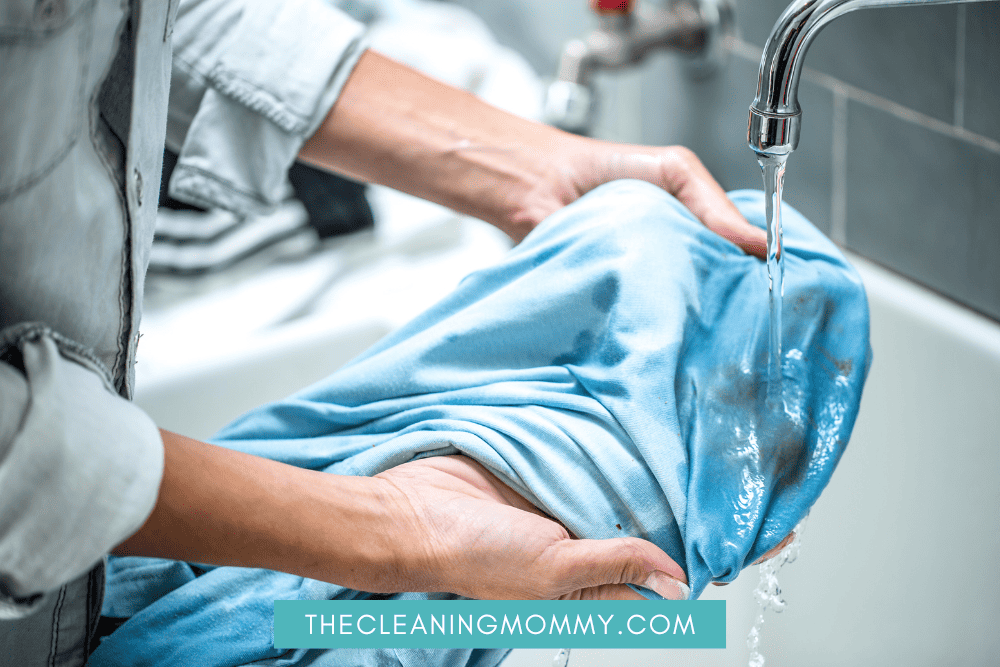
Humidity Control
You can easily prevent mold on your clothes by controlling humidity in your home. Keep your home’s humidity below 60% to maintain a dry environment. Invest in a dehumidifier for humid areas or if you struggle to maintain recommended levels.
Make sure to ventilate your home, as certain rooms are prone to moisture accumulation, like the bathroom and kitchen.
Use exhaust fans that vent outside of your home in these areas. Additionally, fix any leaks in your home’s roof, walls, or plumbing promptly to avoid providing mold with the moisture it requires to grow.
By following these guidelines for proper clothing storage and humidity control, you can effectively reduce the risk of mold growing on your garments and maintain a clean, mold-free wardrobe.
When to Seek Professional Help
Sometimes, no matter what you do, you can’t seem to get rid of mold on your clothes.
When this happens, call in the professionals and let them do what they do best!
If you have tried everything that I mentioned above and you still have mold on your clothes or those horrible musty smels are still clinging to your favorite outfits. Then I recommend that you call a professional mold removal services and let them take care of the problem.
They have advanced cleaning tools and techniques that can thoroughly remove mold from your clothes.
When mold has spread to multiple clothing items or throughout your closet, it could indicate a larger problem, such as mold growth in your home’s walls or ventilation system. In this case, it’s wise to consult a professional mold remediation expert to inspect your home and tackle the underlying issue.
Also, if someone in your household has respiratory problems like asthma or allergies, mold-contaminated clothes can really worsen their condition. A professional can ensure that mold spores are removed effectively to prevent further health complications.
Lastly, delicate fabrics such as lace, linen, or silk require special care and attention. Instead of risking damage to your garments with DIY methods, consider enlisting a professional cleaner who specializes in handling delicate fabrics. Your dry cleaners should be able to easily help to remove musty smells and get your clothes smelling fresh again, but it will cost you! Be prepared for that!
Remember, your health and the wellbeing of your family and clothes are important, so if the mold is too advanced, seek professional help to keep your home and garments mold-free!
As you can see there are many ways for how to get mold out of clothes easily, but if you are finding mold in your clothes, I would recommend working on preventing mold in your home!
Other Cleaning Articles You May Like:
- How to get lip gloss out of clothes
- How to clean high chair straps
- How to clean a house that had cats
- How to clean a pack and play mattress
- 5 minute cleaning tasks
- Can you get bleach out of clothes
- How to get a musty smell out of your clothes
- How to get mud out of clothes
- How to remove dry erase marker stains from clothes
- How to remove melted crayon from clothes
- How to get bleach out of your carpet
- 9 Genius ways to get your clothes wrinkle free without the use of an iron
- How to quickly get rid of the bad smell in your washing machine!

Grainne Foley
Grainne Foley is a wife and mother of 2 great kids. During her 5 years of full time RV travel, Grainne learned to become very efficient at household chores, in order to make time for family adventures. Now, back in a house, she has continued to create tools and techniques to help others lighten the load of household organization and cleaning.
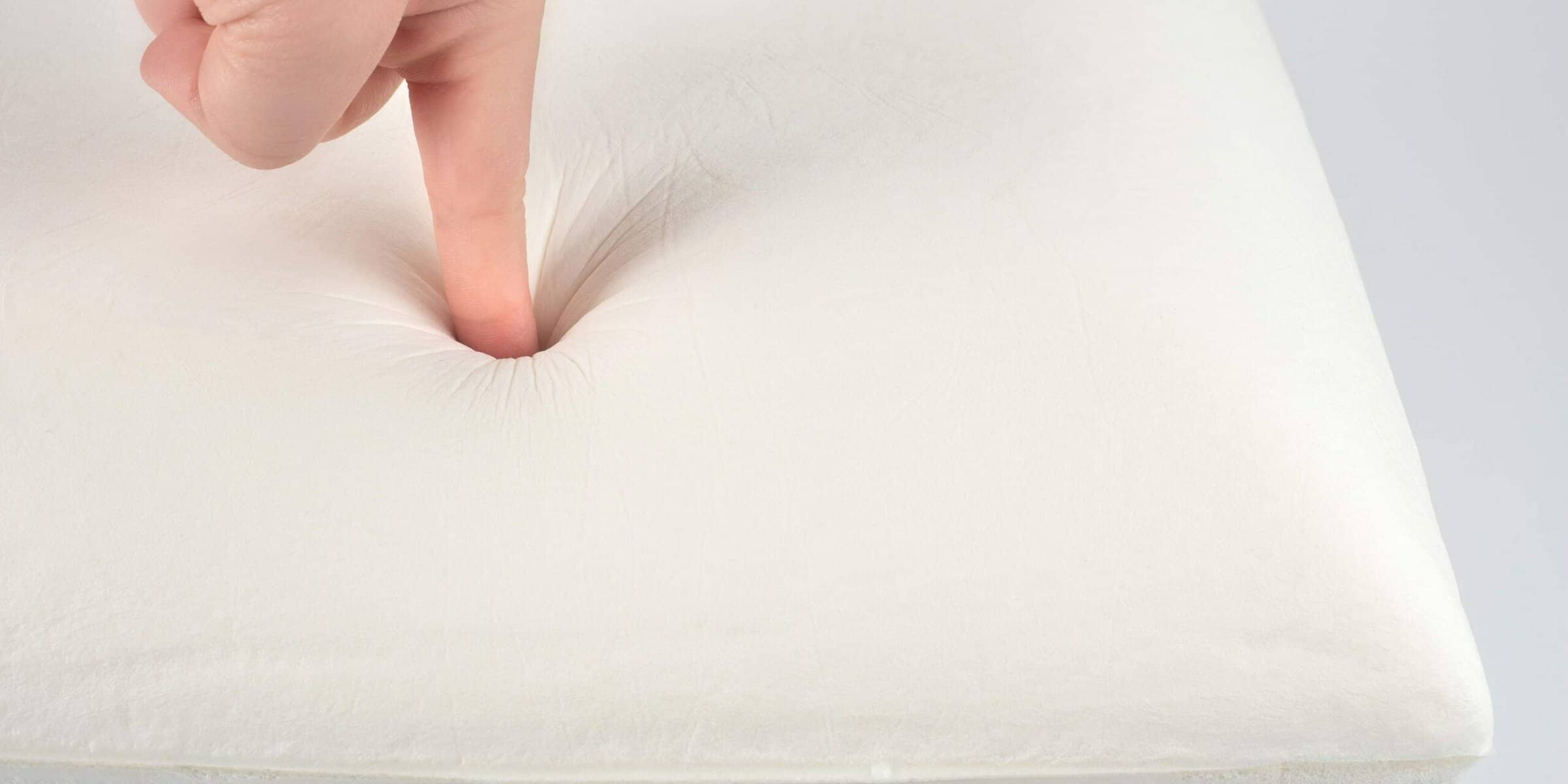
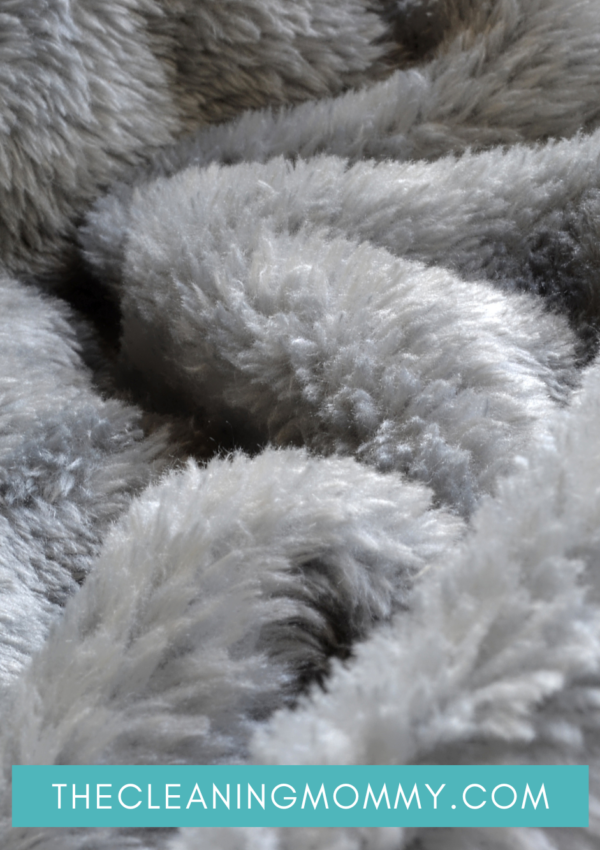
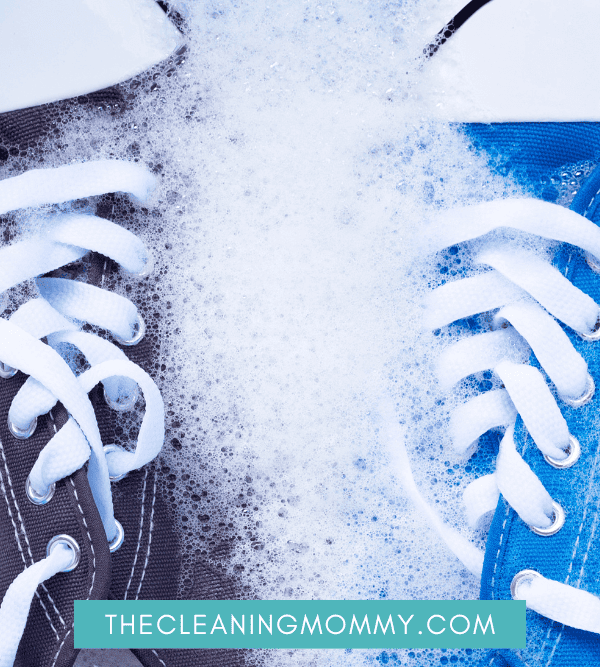
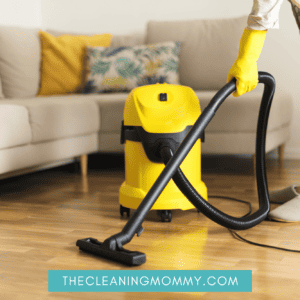
Leave a Reply